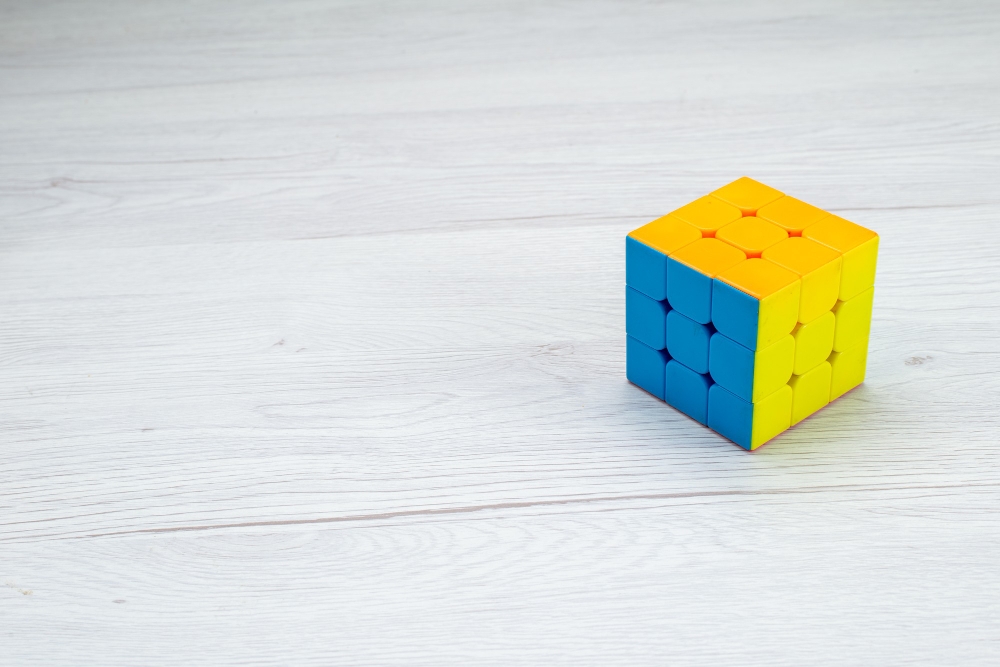Solving a Rubik's Cube, particularly the 3x3 model, remains one of the most exhilarating puzzles to master. From impressing friends and family to enhancing cognitive skills, the benefits of learning to solve this puzzle are manifold. If you're new to cubing or simply looking for a reliable method to improve your solving time, this guide provides a detailed walkthrough using the Layer-by-Layer (LBL) method, a beginner-friendly approach. Here’s how you can become an efficient Rubik's cube solver 3x3.
Step 1: Understanding the Cube's Mechanics
Before attempting to solve the Rubik’s Cube, familiarize yourself with its structure. The cube consists of six faces, each marked by a single color when solved. The central pieces of each face are fixed and determine the color of that face. The movable pieces around the center are categorized into two types: edges, which have two colors, and corners, which have three colors. Your goal is to maneuver these pieces through twists and turns until each face of the cube shows a uniform color.
Step 2: Creating a White Cross
Start with the white face, aiming to form a cross by aligning the white edge pieces around the white center piece. It's crucial that the colors of the edge pieces also match the center pieces of the adjacent sides. This forms the foundation of the cube's solved state.
Tips for Success:
- Choose an edge piece on the top layer to begin.
- Rotate the top layer to match the edge piece with the color of the adjacent center piece.
- Use vertical turns to bring the edge piece to the white face while maintaining alignment.
Step 3: Solving the White Corners
Once the cross is in place, focus on inserting the white corner pieces. Each corner should match with the white face and the corresponding side colors.
Steps to Follow:
- Locate a white corner piece on the top layer.
- Position the corner above the slot where it needs to go.
- Apply a simple algorithm to insert the corner while keeping the cross intact.
This may require several rotations, but with practice, it becomes intuitive.
Step 4: Completing the Middle Layer
After solving the white face and the first layer of corners, move to the middle layer edges. This involves inserting each edge into its respective position without disrupting the solved white face.
Strategy:
- Identify an edge piece in the top layer that belongs in the middle layer.
- Use algorithms to position the edge between the correct centers, effectively solving the second layer.
Mastering this step minimizes the need for later adjustments.
Step 5: Developing the Yellow Cross
Flip the cube over so the white face is on the bottom. Your next task is to create a yellow cross on the now-top face, regardless of the edge pieces' side colors.
Techniques:
- If there’s no yellow edge in place, apply a specific algorithm to form a cross.
- Adjust the cross carefully to avoid shifting the middle layer.
Step 6: Aligning the Yellow Edges
With the cross in place, align the yellow edges with the side centers. This ensures that the edges are not only in the correct formation but also positioned for the final steps.
Process:
- Rotate the top layer until at least two edges are aligned with their centers.
- Execute a sequence of moves to correctly orient all edges if they are not aligned after the initial rotation.
Step 7: Positioning the Yellow Corners
Next, position the yellow corners so that each is located in the correct spot of the top layer. Orientation doesn’t matter at this stage—focus on placement.
Method:
- Identify corners that are already in the correct location.
- Use an algorithm to cycle the position of the corners until each one is in the right place.
Step 8: Orienting the Yellow Corners
The final major step is to orient the yellow corners so that the yellow stickers face up, completing the yellow face.
Actions:
- Select a corner that is incorrectly oriented.
- Apply a corner-twisting algorithm repeatedly until the corner is correct.
- Repeat for each corner, ensuring the rest of the cube remains intact.
Step 9: Finishing Touches
The last adjustments involve any remaining edge pieces that might not be correctly aligned. This final touch will fully solve the Rubik's Cube.
Final Adjustments:
- Check each face of the cube for any misaligned edges.
- Execute necessary maneuvers to align all edges without disrupting the already placed corners.
Conclusion
Following these detailed steps will guide you from a beginner to a proficient Rubik's cube solver 3x3. This method, while simple, covers essential techniques that pave the way for exploring more complex solving methods. Regular practice is key to decreasing solving time and increasing fluency. Remember, each solve sharpens your skills, building speed and confidence with the cube. Happy cubing!



